The Rijksmuseum is the national museum of the Netherlands. We tell the story of 800 years of Dutch history, from 1200 to now. In addition, we organize several exhibitions per year from our own collection and with (inter) national loans.
Floor Plan
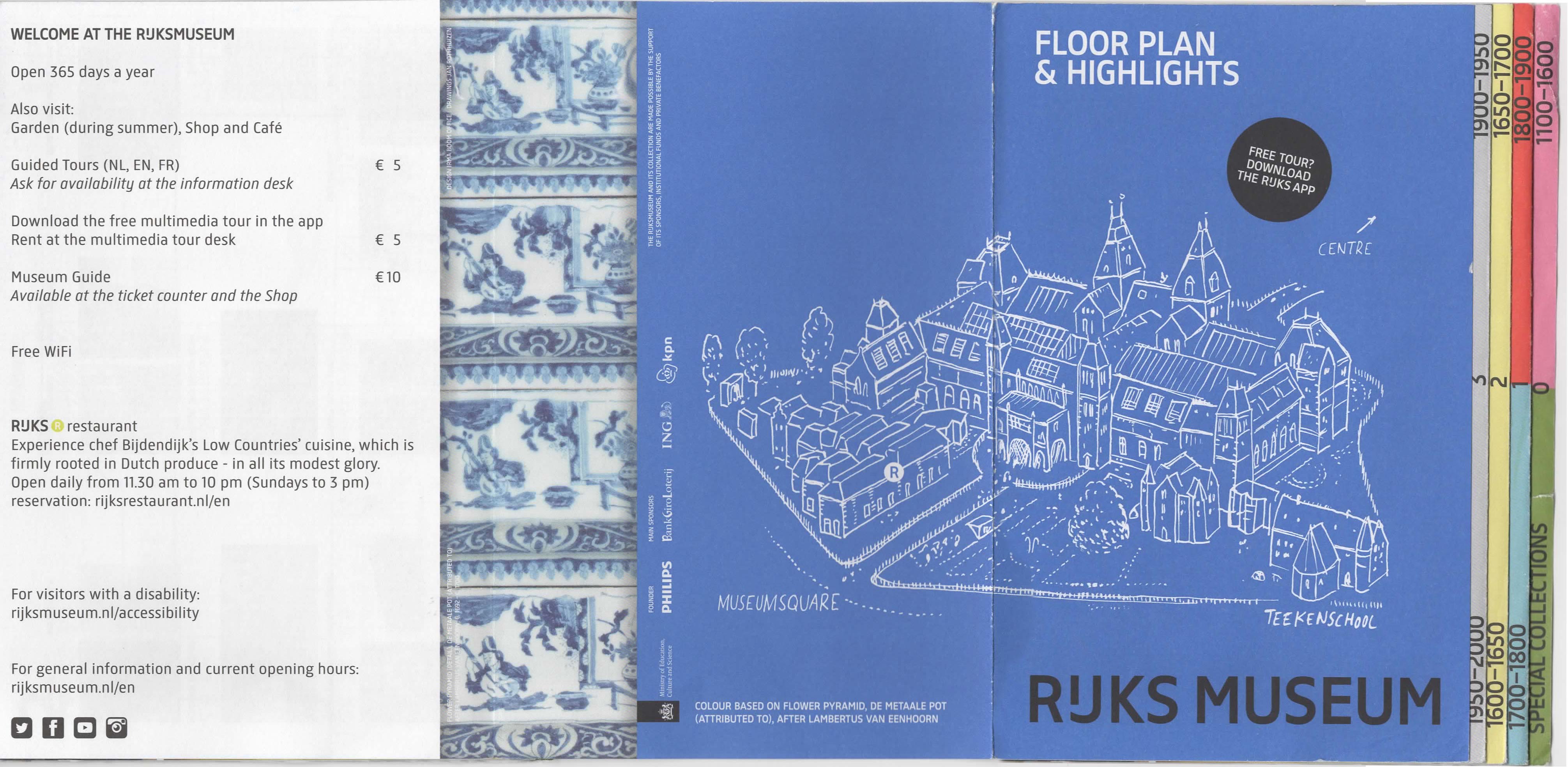
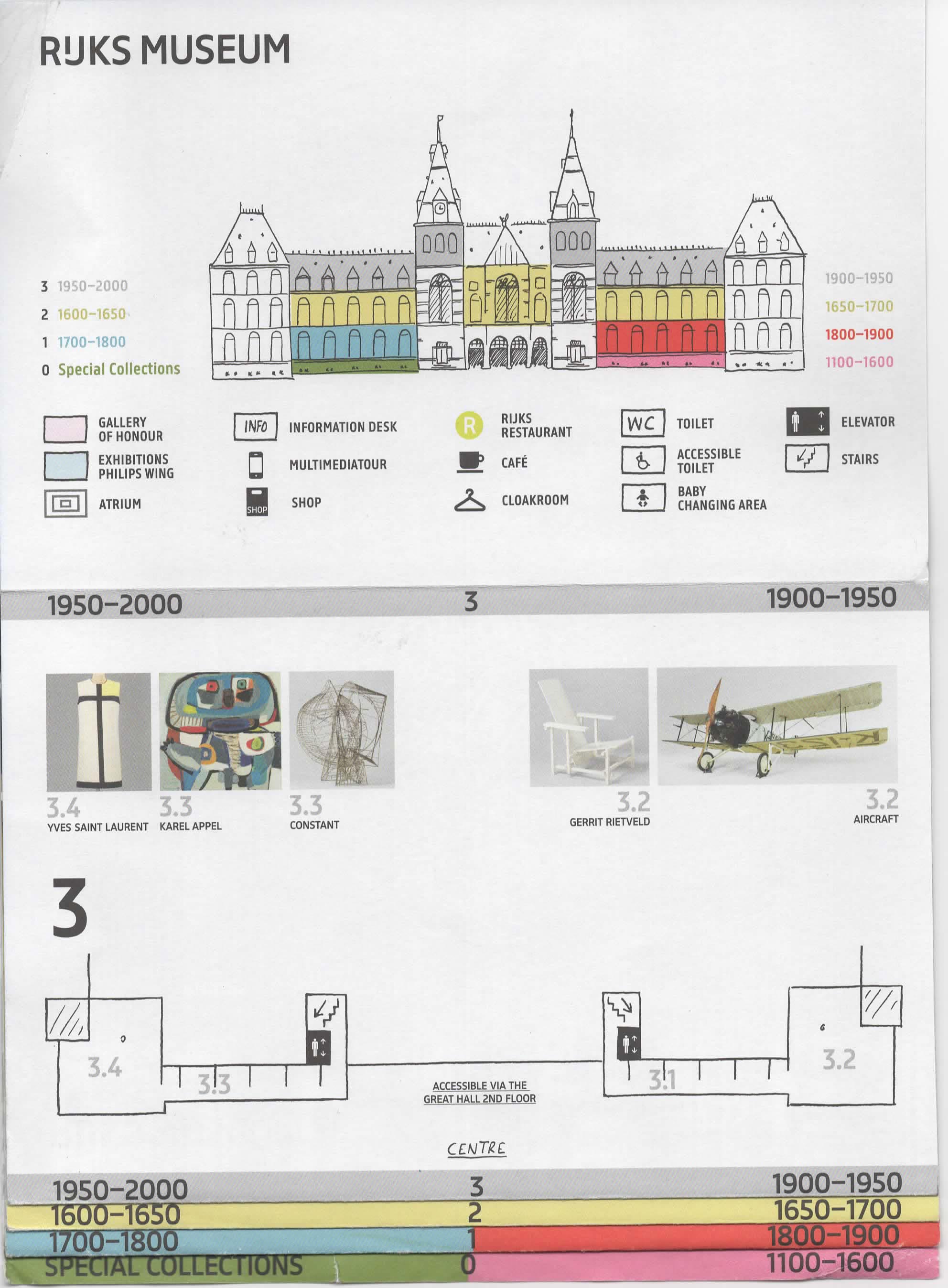
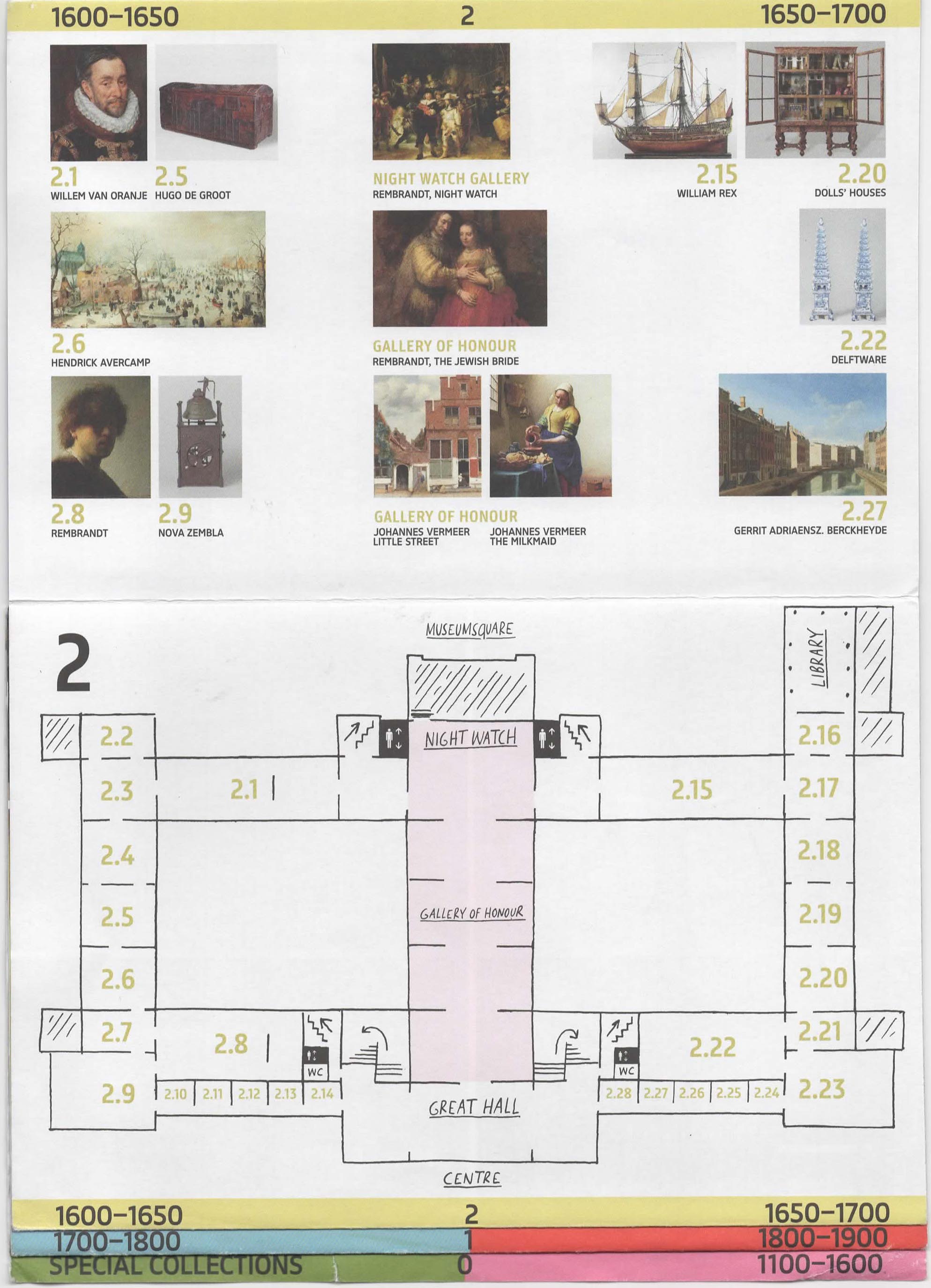
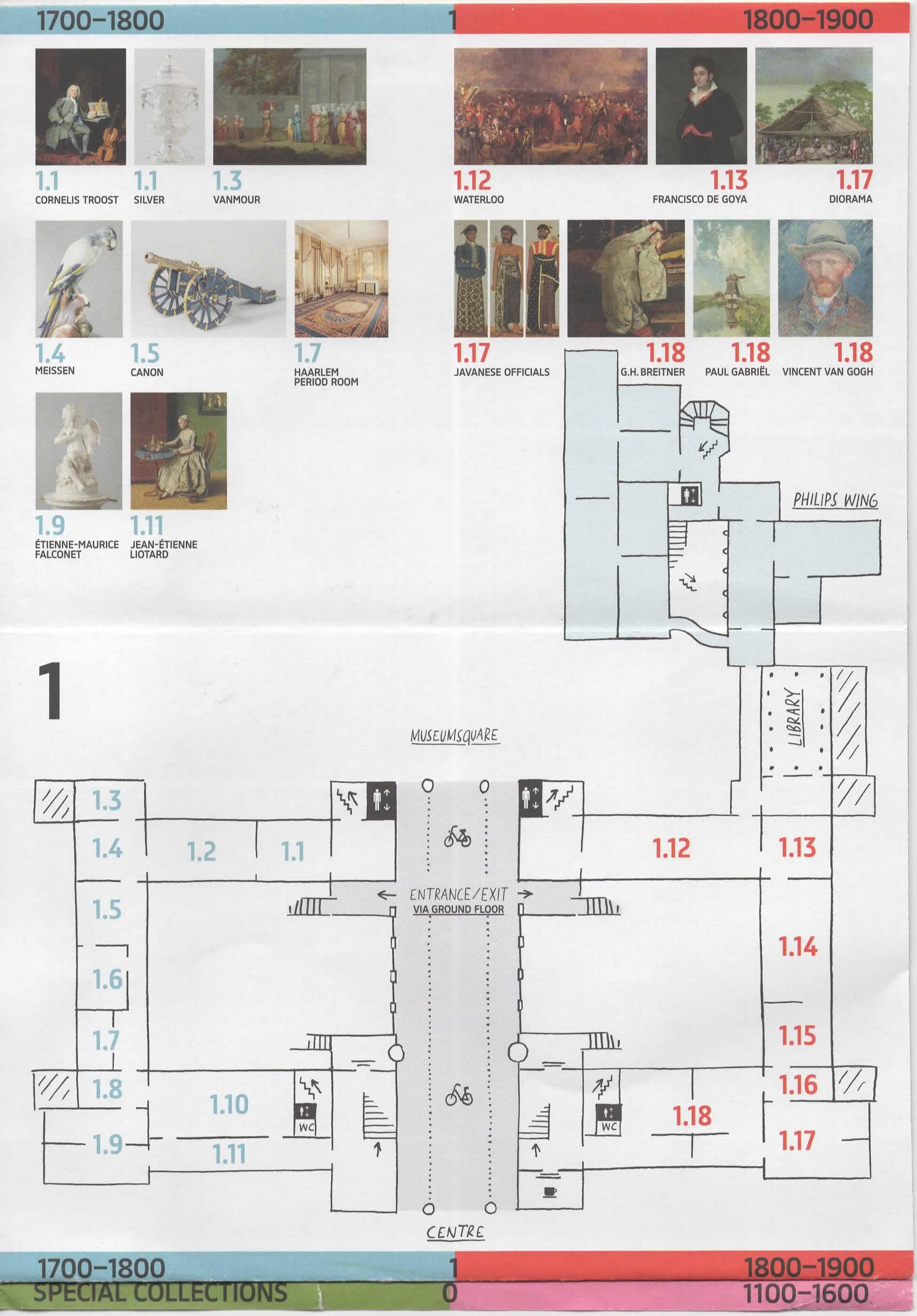
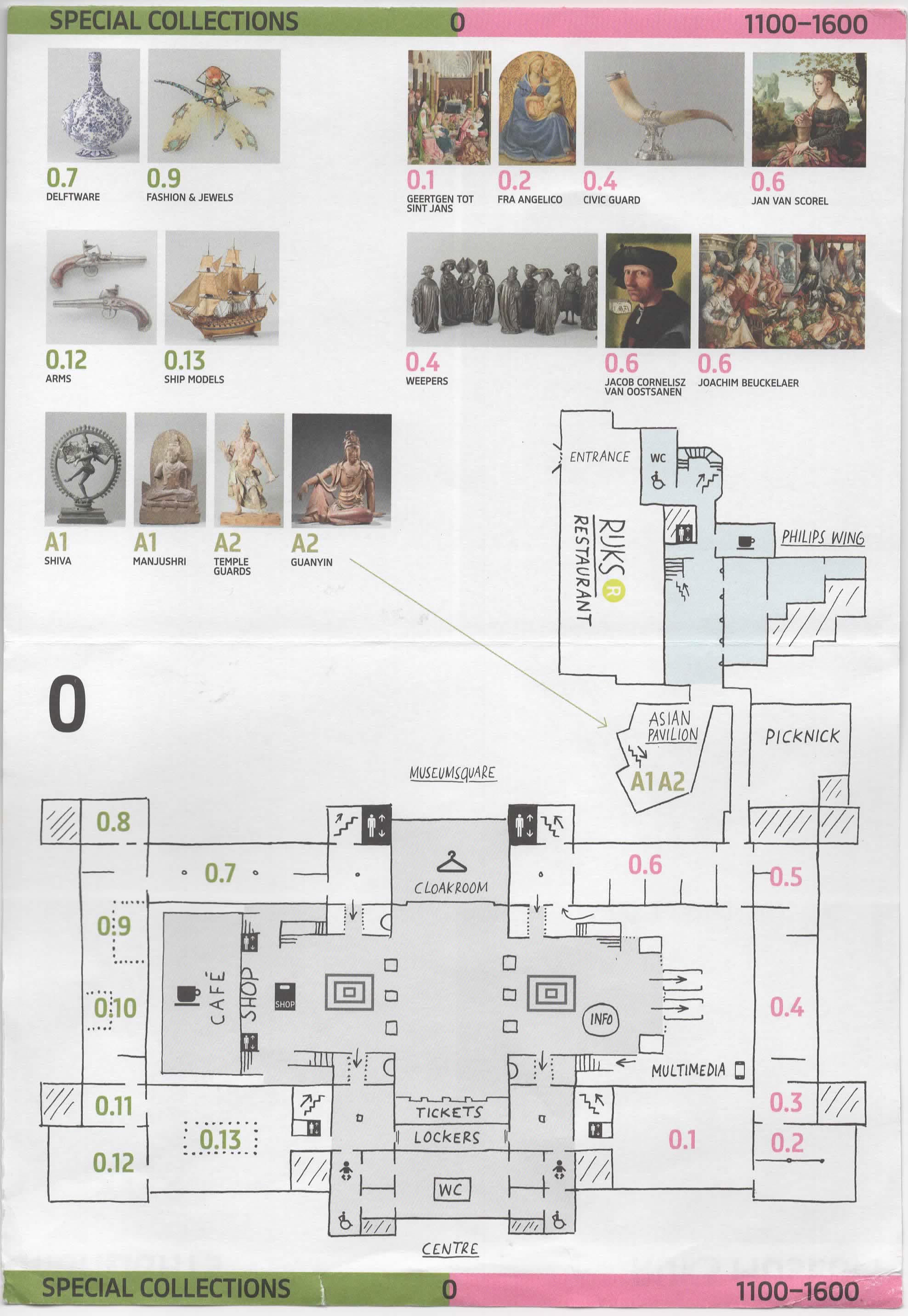
The Holy Kinship

workshop of Geertgen tot Sint-Jans
(C. 1455/65-1485/95)
Haarlem, c, 1495
oil on panel
Christ’s next of kin are gathered in an imaginary medieval church. The term for such a scene derives from the word for a blood relation. At left, the Virgin (in blue) is seated with Jesus on her lap beside her mother, Anne. Behind them stand their husbands, Joachim and Joseph. At right sits Mary’s cousin Elizabeth with her son, John the Baptist.
Madonna of Humility

Fra Angelico, (c. 1440-1455)
Florence, c. 1440
tempera on panel
As a Dominican monk, Fra Angelico was not subject to the strict rules of the Florentine painters’ guild. He was thus free to develop a more personal style. This combined strong realism and solid forms with a certain sweetness partly derived from earlier Sienese and Florentine examples.
Shiva Nataraja

lndia, Tamil Nadu
Chola style, 12th century
bronze
Shiva, in his manifestation as Nataraja (King of Dancers), represented in the anandatandava pose and encircled by a halo of fire, is both the creator and destroyer of the world. Beneath his foot is a dwarf, symbolizing ignorance. Richly decorated bronze figures of Hindu gods were carried in procession on feast days. Carrying poles were inserted through the rings on the base.
Guanyin

China, Shanxi, 12th century
painted and gilded wood
Here the Buddhist deity Guanyin, saviour of people in peril, is represented meditating on a rock. According to legend, he was once found in this position, meditating on the reflection of the moon in water, a symbol of illusion and transience in Buddhism. His pose and face embody inner peace and concentration.
Two temple guardians

Japan, 14th century
wood with traces of painting
Temple guardians are placed at the entrance to a temple to ward off evil. Each of these figures holds a vajra for crushing ignorance. Their open and closed mouths represent a and un, the first and final syllables of Siddham (a script used to write Sanskrit): these syllables symbolize all spoken sounds and scripts, thus all knowledge. Worshippers who enter the temple precinct through the guardians’ gate symbolically acquire this knowledge.
Portrait of Jan Gerritsz van Egmond van de Nijenburg

Jacob Cornelisz van Oostsanen, alias Jacob War van Amsterdam
(c. 1472/77- in or before 1533)
Amsterdam, c 1518
oil on panel
This sitter was a member of a prominent Dutch family. He served as bailiff and burgomaster of Alkmaar. In his right hand he holds a prayer nut encased in silver or gold, an extremely costly object for private devotion. He used it to demonstrate his piety, but also, and primarily, his affluence.
Portrait of Jacob Cornelisz van Oostsanen

workshop of Jacob Cornelisz van Oostsanen, alias Jacob War van Amsterdam
(c. 1472/77 – in or before 1533)
Amsterdam, 1533?
oil on panel
Long accepted as the earliest known north Netherlandish self-portrait, this is probably a copy aftera lost work. Such portraits illustrate the increasing status of artists. Jacob, whose traditional nickname means ‘son of Cornelis from Oostsanen’, looks directly at us. Behind him is a paper with the date 1533 and his monogram I W (inverted) v A (‘J[acob] W[ar] v[an] A[msterdam]’).
Portrait of a Woman

Catharina van Hemessen (1527/28 – after 1567)
Antwerp, 1548
oil on panel
Catharina van Hemessen is the first Southern Netherlandish female painter by whom dated and signed work is known. This portrait is probably one of her earliest works. In the 16th century, women usually did not have a profession, let alone an apprenticeship or their own studio. It is therefore likely that Catharina was trained by her father, the painter Jan Sanders van Hemessen.
The Well-stocked Kitchen

Joachim Beuckelaer (c. 1533?-1575)
Antwerp, 1566
oil on panel
The central theme of this painting is not the profuse display of vegetables, fruit, meat, poultry and pots and pans on offer by these kitchen maids. Instead it is Christ’s visit to Mary and Martha, which is depicted inconspicuously in the background. The contrast between the foreground and the background conceals the message of the painting: do not give in to earthly temptations.
Self-portrait

Vincent van Gogh, (1853-1890)
oil on cardboard, 1887
Vincent moved to Paris in 1886, after hearing from his brother Theo about the new, colourful style of French painting. Wasting no time, he tried it out in several self-portraits. He did this mostly to avoid having to pay for a model. Using rhythmic brushstrokes in striking colours, he portrayed himself here as a fashionably dressed Parisian.
Van Gogh and his contemporaries
Vincent van Gogh (1853-1890) was as unknown in the Netherlands during his lifetime as he is world famous today. In 1892 the artist Jan Toorop organized the first Dutch exhibition of Van Gogh’s work. It created a shock wave. Van Gogh’s exceptionally colourful paintings had a great impact on the younger generation of artists.
Toorop was the most international Dutch artist in the 1880s. Through him, his contemporaries were exposed to artistic developments in Belgium and France. The work of French contemporaries, such as Monet, was otherwise hardly known in the Netherlands.
Experiments in colour and form were also characteristic of the applied arts in this period. Art Nouveau, a movement of French origins, inspired by Japanese art and nature, was called ‘New Art’ in the Netherlands. It was influenced particularly by Indonesian art.
A Windmill on a Polder Waterway, Known as ‘In the Month of July’

Paul Joseph Constantin Gabriel (1828-1903)
oil on canvas, c. 1889
‘Our country is saturated with colour. … I repeat, our country is not grey, not even in grey weather, nor are the dunes grey’, wrote Constant Gabriël in a letter. Unlike many Hague School painters, he actually enjoyed depicting a beautiful summer day. There are even two of them in this painting: the image of the grass, sky and mill, and their reflection in the water.
The Battle of Waterloo

Jan Willem Pieneman (1779-1853)
oil on canvas, 1824
Here the Duke of Wellington is receiving the message that Prussian forces are coming to his aid. Wellington, commander of the Anglo-Dutch troops, is the central figure in this group portrait of the major players at Waterloo. Lying wounded on a stretcher in the left foreground is the Dutch Crown Prince, later King William II. Originally intended for Wellington, the painting remained in the Netherlands thanks to William I who bought the picture for his son.
The Milkmaid

Johannes Vermeer (1632-1675)
oil on canvas, c. 1660
A maidservant pours milk, entirely absorbed in her work. Except for the stream of milk, everything else is still. Vermeer took this simple everyday activity and made it the subject of an Impressive painting – the woman stands like a statue in the brightly lit room. Vermeer also had an eye for how light by means of hundreds of colourful dots plays over the surface of objects.
Woman Reading a Letter

Johannes Vermeer (1632-1675)
oil on canvas, c. 1663
Enjoying a quiet, private moment, this young woman Is absorbed in reading a letter in the morning light She is still wearing her blue night jacket All of the colours in the composition are secondary to its radiant lapis lazuli blue, Vermeer recorded the effects of light with extraordinary precision. Particularly innovative is his rendering of the woman’s skin with pale grey, and the shadows on the wall using light blue.
View of Houses in Delft, Known as ‘The Little Street’

Johannes Vermeer (1632-1675)
oil on canvas, c. 1660
This is an unusual painting in Vermeers oeuvre, and remarkable for its time as a portrait of ordinary houses. The composition is as exciting as it is balanced. The old walls with their bricks, whitewash, and cracks are almost tangible. The location is Vlamingstraat 40-42 in Delft Vermeers aunt Ariaentgen Claes lived in the house at the right, with her children, from around 1645 until her death in 1670.
Copy of The Night Watch

attributed to Gerrit Lundens (1622-1686)
oil on panel, c. 1642 – c. 1655
This 17th-century copy of The Night Watch reveals that the composition was originally larger. The painting was cut down on three sides – above all, on the left – when it was moved in 1715 from the large hall of the Kloveniersdoelen to the Amsterdam Town Hall. It had to fit in between two doors in its new location. The strips of canvas that were cut away were never found.
Portrait of William I, Prince of Orange

Adriaen Thomasz Key (c. 1544-1589)
oil on panel, c. 1579
Of the noblemen who rebelled against Phillip II’s Spanish rule of the Netherlands, William of Orange rose to become the great leader of the Dutch Revolt. He defended his own interests, strove for greater independence and advocated freedom of religion. In 1580 Phillip II put a price on his head, and he was assassinated four years later.
Winter Landscape with Ice Skaters

Hendrick Avercamp (1585-1634)
oil on panel, c. 1608
The high vantage point of this painting turns it into a sampler of human – and animal – activity during a harsh winter. Hundreds of people are out on the ice, most of them for pleasure, others working out of dire necessity. Avercamp did not shy away from grim details: in the left foreground crows and a dog feast on the carcass of a horse that has frozen to death.
Isaac and Rebecca, Known as ‘The Jewish Bride’

Rembrandt van Rijn (1606-1669)
oil on canvas, c 1665-1669
It was common for people to have themselves portrayed as historical personages. This man and woman chose the loving biblical couple Isaac and Rebecca. Rembrandt veered from the conventional by representing the pair in an intimate and private moment, and by using a thick, impasto manner of painting. He subsequently worked the paint with a palette knife to create a glittering, sculptural sense of relief.
Self-portrait

Rembrandt van Rijn (1606-1669)
oil on panel, c. 1628
Even as an Inexperienced young artist Rembrandt did not shy away from experimenting. Here the light glances along his right cheek, while the rest of his face is veiled in shadow. It takes a while to realize that the artist is gazing Intently out at us. Using the butt end of his brush, Rembrandt made scratches in the still wet paint to accentuate the curls of his tousled hair.
The Windmill at Wijk bij Duurstede

Jacob Isaacksz van Ruisdael (c 1628-1682)
oil on canvas, c 1668-1670
The windmill rises up majestically, defying the dark rain clouds and overshadowing the castle and the church of Wijk bij Duurstede. The River Lek flows in the foreground. This painting is world famous, and rightly so. In this impressive composition, Ruisdael united all the typical Dutch elements – the low-lying land, the water and the expansive sky – manipulating them to converge on the equally characteristic Dutch mill.
The Threatened Swan

Jan Asselijn (1610-1652)
oil on canvas c. 1650
A swan fiercely defends its nest against a dog. In later centuries this scuffle was interpreted as a political allegory: the white swan was thought to symbolize the Dutch statesman Johan de Witt (assassinated in 1672) protecting the country from its enemies. This was the meaning attached to the painting when it became the very first acquisition to enter the Nationale Kunstgalerij (the forerunner of the Rijksmuseum) in 1880.
View of the Golden Bend in the Herengracht

Gerrit Adriaensz Berckheyde (1658-1698)
oil on panel, 1671-1672
Amsterdam’s huge population growth required it to expand in the 17th century: the city’s rings of canals were dug in phases. This is Herengracht under construction, with some plots still undeveloped. This particular section of the canal became the preserve of the very rich. They and their heirs were often mayors of the city and sat on the boards of the VOC, the WIC and the Suriname Society.


![Rijks Museum [ING]](https://www.aahmetyildiz.com/wp-content/uploads/gezi/netherlands/amsterdam/20230702_rijksmuseum/main.jpg)
Yorum yapın